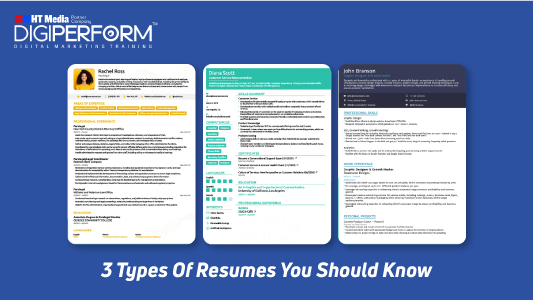Have you ever tried applying for a job but don’t know how to make a resume? If that’s the case, then this blog might be useful.
If you are applying for different jobs, you might want to avoid submitting exactly the same resume to every employer. Different employers have different individual requirements, some may want to focus more on your work history, and others on your skills. It is important to know what type of resume to use in a specific situation.
What is a resume?
First, let’s know what a resume is. “Résumé” comes from the French word résumer meaning ‘to summarize’. It is a formal document created by a person which contains their background, skills, accomplishments, and even previous jobs. It is submitted to your employers for them to have a glimpse of your background and decide if you are qualified for the position.
Types of resumes
Now, let’s discuss the types of resumes. There are different types of resumes to choose from, it is important to know which one to choose because it gives you a better chance of getting accepted. Moreover, it helps you provide the information your employers need. Here are three main types of resumes.
1. Chronological resume
It is the most common type of resume and is considered the standard in most industries. A chronological resume focuses more on your work history. It is arranged in chronological order in which your most recent job is found at the top, followed by your previous ones below.
Employers generally prefer this type of resume because it contains all their needed information and is presented in a short and concise manner. It shows your job history and the progression of your career over time. It is most beneficial for job applicants with a structured work history and a clear career path. When using this type of resume, make sure you have no sizable work gaps.
2. Functional resume
A functional resume is also known as a skill-based resume. It mainly focuses on your relevant professional hard skills and soft skills rather than your work history. The “relevant skills” section takes up the majority of your resume.
If you are changing jobs but don’t know how to make your past position relevant to your new job, then this type of resume might be for you. This can also be advantageous when you have sizable gaps in your work history. Since this resume focuses more on the skills, it can also be useful to fresh graduates with no experience.
3. Combination resume
A combination resume is a hybrid resume that combines a reverse-chronological resume and a functional resume. It allows you to highlight both your professional skills and work experience since it focuses on both your skills and work history. There are two main advantages to a combination resume, it allows you to present a quick overview of your work history, and helps your employer know your skills and qualifications.
When to use a combination resume?
Most people prefer the two traditional resume formats mentioned above because it is straightforward and easy to make. A combination resume is very situational so you should use it when you:
- Are changing careers
- Have sizable employment gaps in your work history
- And has a diverse range of skills and experiences.
Conclusion
Choosing which type of resume to use depends on your situation. To get a better chance of getting accepted, make sure you also do your research on the different resume templates and decide which resume template is right for you. Time is gold for most employers, which is why they prefer straightforward resumes, so remember to keep your resume concise and good luck on your job-seeking journey!






